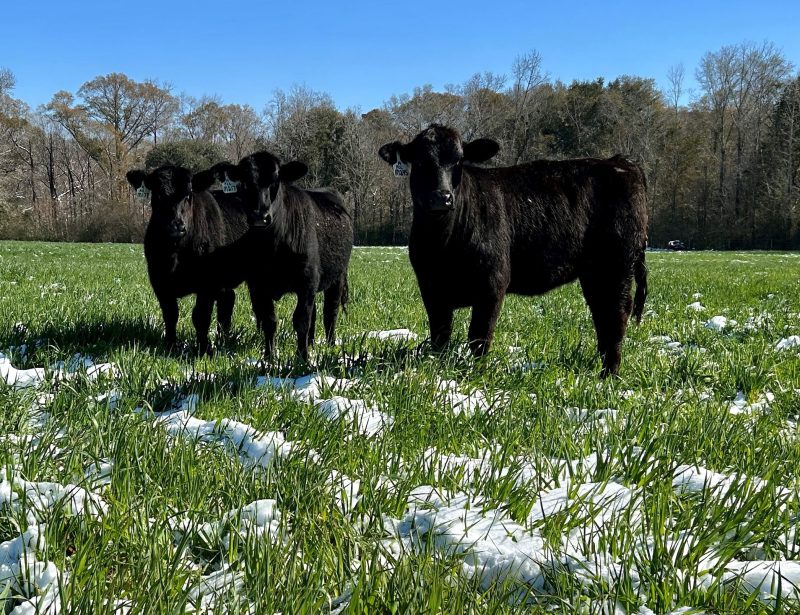A typical cow-calf rancher will replace 17% of their total herd each year, as bred heifers are added to the inventory to replace the culled cows. Meaning, a 100-head cow operation will on average need enough bred heifers to replace 17 culled cows. If you purchase your replacements as bred heifers the math and process is simple – if you retain your replacement heifers, much more strategy comes into play.
–
Q1: How many replacement heifers should be kept?
Answer: If a total of 17% of your herd will need to be replaced by bred heifers, how many heifers do you need to keep and breed to end up with 17%? Typically, it is advised that 150% of the heifers needed are kept for development. This will allow for some leeway to cull heifers that do not perform as well, and or do not become pregnant. For example: If you have a mature cow herd of 100 head and cull at an annual rate of 17% + 50% additional heifers, you would need to keep a total of 26 heifers for your replacement heifer development program.
More Information: A few tips about how many heifers to keep
–
Q2: How important are genetics to the success of a replacement heifer?
Answer: Genetics play a major role in the successful entry of a replacement heifer into the cow herd. Puberty is the major limiting factor in replacement heifer development and is moderately heritable (age at puberty r2= 0.20-0.60). In addition, it is highly correlated to overall fertility. Therefore, by keeping good production records and utilizing them to select your replacements, you can capitalize on the productive genetics within your cow herd. Keep in mind, a female that is productive in your herd should produce daughters who will be productive, and one who struggles (whether it is body condition, calving interval or other production traits) is more likely to produce a daughter who will struggle too!
The genetics of the bull should also be taken into consideration. One of the best predictors of the bull’s daughter’s reproductive performance is their yearling scrotal circumference. This is a moderately heritable trait that is a good predictor of age at puberty and lifetime pregnancy rates.
More Information: Scrotal Circumference in Bulls Linked to Puberty in Replacement Heifers
–
Q3: How does the age of the heifers contribute to reproductive success?
Answer: Cows that calve earlier in the calving season tend to continue to do so in subsequent years, remaining in the annual production cycle, and producing greater total pounds of calf over their lifetime. This trait can be passed on to their daughters. Therefore, by selecting the older heifers you are also selecting heifers from dams that calved earlier in the calving season, which would typically be the most productive group of females in your herd. In addition, age is a factor that limits the attainment of puberty. If heifers are old at the beginning of the development phase, this will help ensure puberty is attained prior to the breeding phase.
More Information: Looking at Cow Longevity
–
Q: How do implants impact a potential replacement heifer’s fertility?
Answer: The rule of thumb is to not keep heifers that have been implanted for replacements. If heifers are not identified prior to implanting as replacements, they should not be implanted more than once prior to weaning, and never before 40 days of age, as per label directions with one of the three implants approved for growing calves (Ralgro®, Compudose®, and Synovex-C®).
More information: Growth Implants on Beef Heifer Reproduction
–
Selecting the right type and number of replacement heifers is key to the long-term success of a cattle operation. Whatever your strategy, use your herds records, make decisions based on data, and run the numbers. If you want more information or need help developing a plan, contact your local county extension agent.
- Big Doe Contest Returns for 2025: A Growing Thanksgiving Tradition - November 14, 2025
- UF/IFAS Extension Panhandle Cattlemen’s College Announces Scholarship Opportunity for Florida Youth – Application Deadline September 15 - August 29, 2025
- Foot Rot Prevention and Treatment for Cattle - August 15, 2025

